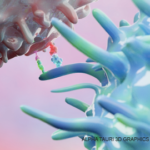Results showed the machine learning-generated method of histology scoring was associated with blood tests for inflammation such as levels of erythrocyte sedimentation rate, C-reactive protein (CRP) and autoantibodies, such as anti-cyclic citrullinated peptide and rheumatoid factor. In summary, consensus clustering of gene expression revealed three distinct synovial subtypes:
- High inflammatory, characterized by extensive infiltration of leukocytes and higher levels of plasma cells, synovial lining hyperplasia, Russell bodies, fibrin and neutrophils;
- Low inflammatory, characterized by enrichment in pathways such as transforming growth factor, glycoproteins and neuronal genes, but with little evidence of inflammatory markers in the blood; and
- A mixed subtype.
The results suggested that mechanisms of pain may also differ by synovial subtype, with CRP levels corresponding to the severity of the patient’s pain in the high inflammation subgroup but not in the other subgroups. Further, some patients in the low inflammatory group exhibited high swollen and tender joint counts.
Histologic analysis revealed a potential explanation for this observation. Specifically, mucin, an extra-cellular matrix protein that has a gelatinous quality because of retained water, was abundant in the low inflammatory group. Dr. Orange says, “When mucin is present in the joint, the examining rheumatologist may not always be able to tell whether the physical exam finding of swelling is due to mucin or due to immune cell infiltration, which could make it harder to know how to optimally treat the patient,” she says.
“Maybe for patients who aren’t responding the way we normally think they should and have no inflammation in their blood, a synovial biopsy might help to define the right treatment approach,” Dr. Orange says. “We’re also very interested in developing blood and imaging biomarkers of the synovial subtypes so patients won’t need to undergo synovial biopsy.”
Distinguishing RA Subgroups
Paul Peter Tak, MD, PhD, a senior vice president at GSK Pharmaceuticals in Stevenage, England, and professor of medicine at the University of Amsterdam, commends the new study’s authors for highlighting a new way of distinguishing different RA subgroups. Markers applied in immune-histologic analysis of synovial tissue can also differentiate RA from other forms of arthritis, he says. “The authors clearly showed three distinct RNA molecular subgroups.” A previous study by Dr. Tak and colleagues showed heterogeneity of RA based on synovial tissue analysis by taking biopsy samples from patients early in the course of their disease.2
An important take-home message from the new study, Dr. Tak says, is that it confirms and extends the fact that RA, as defined clinically, is not a single pathogenic disease entity. Therefore, it should be considered a syndrome, rather than a disease.

